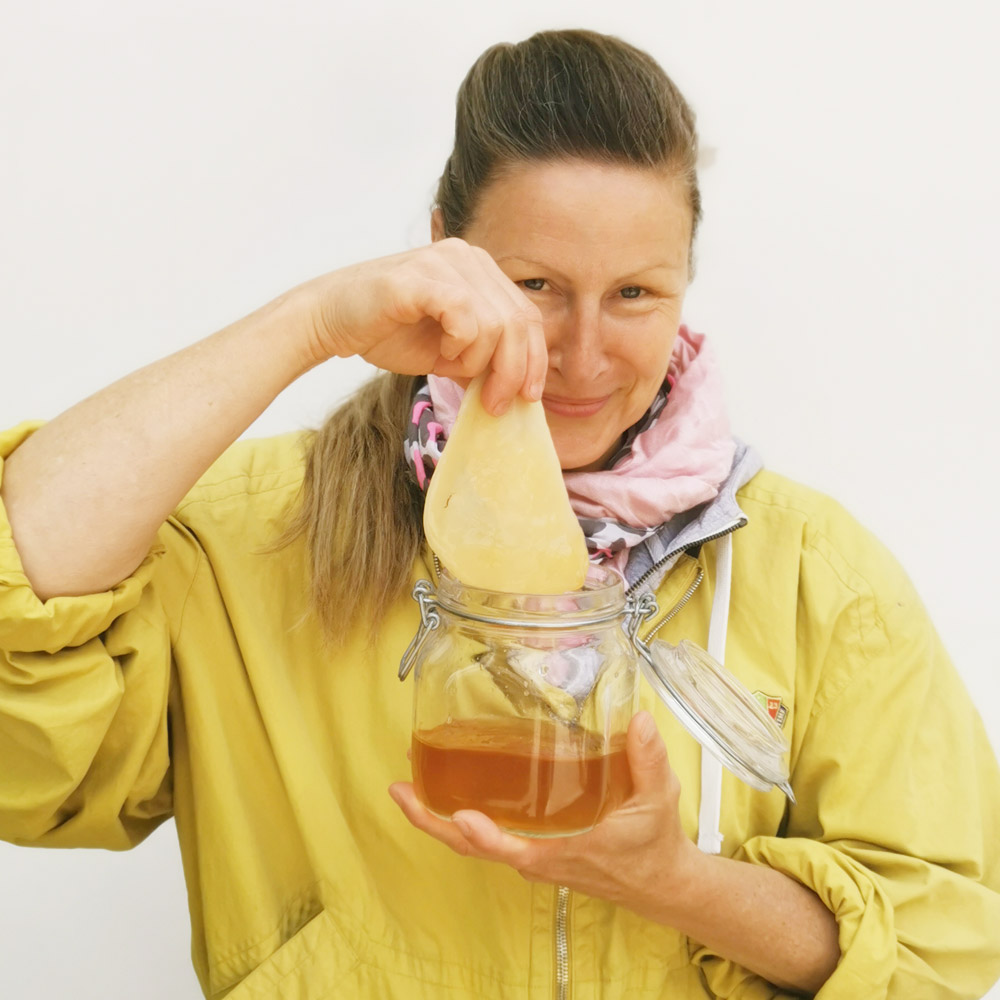
Kombucha Guide
The hype around the deliciously fizzy fermented Kombucha Tea is going on…What´s your favourite one?
Strawberry? Passion Fruit? Pear Mint ? Lemon Ginger? Mint Lime Mojito? Apple Cinnamon? Cucumber Lime?
Mango Ginger? Pineapple Basil? Strawberry Basil? Raspberry Rose? Rosemary Peach? Lavender Orange?
Let´s go and make more…
I will teach you a simple version of this probiotic brew from start to finish!
What is Kombucha?
Kombucha tea is obtained from a symbiotic culture of acetic acid bacteria, lactic acid bacteria and yeasts in a sweet medium, generally black tea.
What is a Scoby?
First of all to brew Kombucha, you need to find in your city brewers who can offer or sell you a scoby.
Scoby stands for “symbiotic culture of bacteria and yeast.”
It is a round, rubbery and opaque mass with a mild, vinegar-like smell.
It is this colony of good bacterias that aids the fermentation process
to covert the sugar into ethyl alcohol, acid and carbon dioxide.
Note: Kombucha contains between 0.7 and 1.3 percent alcohol.
How long does it take?
To obtain a fizzy flavoured Kombucha version we have to go through two phases:
1st fermentation and 2nd fermentation.
1st fermentation: takes around 7-12 days at room temperature to obtain unflavoured Kombucha.
2nd fermentation: takes around 3-7 days at room temperature to create flavour and carbonation.
Very important:
Always work with very clean hands and utensils.
Materials:
2.5 liter glass jar
3 x 0,75 liter wing-top glass bottles
Cotton cloth cover
Rubber band
1st fermentation
Ingredients: Black Tea Kombucha
3 organic black tea bags or (5,6 g loose black tea = 3 hipped tsp)
120 g sugar
2 l boiling water
Ingredients: Black Tea/ Green Tea Kombucha
1 organic black tea bag
2 organic green tea bags
120 g sugar
2 l boiling water
Instructions:
1. Make Tea
Bring water to a boil, add to the glass jar with the sugar into.
Add the tea bags and allow them to steep for 20 minutes.
2. Cool down:
Allow hot tea to cool to room temperature. Double check the temperature with your finger.
It is the same principle as for yogurt making.
Tea has to be lukewarm!
Otherwise the Scoby – our beloved bacteria colony will be killed.
3. Add Scoby:
With very clean hands, transfer Scoby into the tea.
4. Add Starter
Add 200 ml of starter Kombucha (from the liquid your Scoby has been preserved in).
It is important to always reserve in the jar with the scoby at least 200 ml unflavoured Kombucha of each batch to use as a starter for the next round.
5. Cover jar
Cover with a few layers of the tightly woven cloth (nutbag) and secure with a rubber band.
6. Fermentation:
Keep the jar at room temperature in a dark, still environment like a kitchen cupboard for 6 to 12 days.
The warmer the air temperature, the faster the Kombucha will ferment. The longer the tea ferments, the more sugar will be transformed and the less sweet it will be.
Check the taste of your Kombucha after a week. It should be mildly sweet and slightly vinegary.
2nd Fermentation:
Ingredients:
For each batch 650 ml homemade Kombucha from the first fermentation.
750 ml flip-flop glass bottle with an airtight seal.
Lemon Ginger Kombucha:
650 ml Kombucha
1 Lemon Zest (stripes) and Juice
1-2 tsp grated ginger
1 tsp sugar
Orange Rosemary Kombucha:
650 ml Kombucha
1/2 Orange Zest (6 stripes)
Rosemary 2 sprigs
1/2 tsp sugar
Lavender Orange Kombucha:
650 ml Kombucha
1/2 Orange Zest (6 stripes)
1 hipped tsp dried lavender
1/2 tsp sugar
Berry Kombucha:
650 ml Kombucha
handful raspberries
Apple Cinnamon Kambucha:
650 ml Kombucha
1/2 Sweet apple peel (6 stripes)
Cinnamon stick 1
Pear Mint Kambucha:
650 ml Kombucha
1/2 Sweet pear peel (6 stripes)
Mint 2 sprigs
Instructions:
Contrary to the first fermentation we need to keep the bottles for the second fermentation airtight to prevent carbonation from escaping.
1. Bottling
Fill 650 ml 750 ml Kombucha into bottles.
2. Sweet flavour
Add your chosen flavour and seal tightly.
3. Fermentation
Let ferment in a dark place at room temperature for 3 to 7 days.
4. Storage
Place the bottles in fridge to slow the fermentation process and to chill before serving.
Enjoy!
